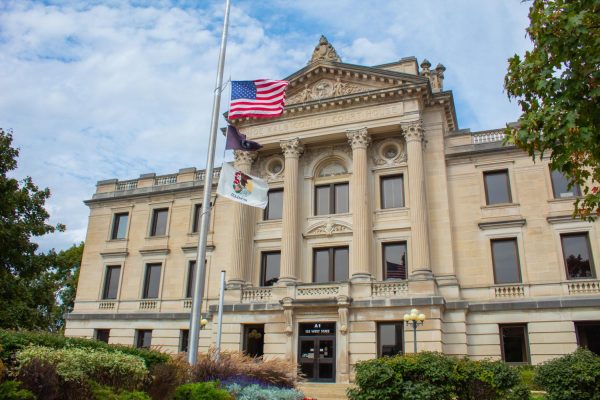Tuition might increase sooner
March 15, 1993
The recently proposed three-year phase-in of a tuition increase for NIU students might be squeezed into a two-year time frame, forcing students to take one good sock on the chin next year instead of a one-two combination.
If the time frame is changed, NIU students taking 15 credit hours both semesters next year will be paying 17 percent higher tuition than students taking the same course load this year.
Added to the 21 percent increase for 15 credit hour students, which went into effect this year, NIU students would see a 38 percent tuition increase over a three-year period.
The Finance and Facilities Committee of the Regents will discuss next year’s tuition rates for NIU students today at 2 p.m. in the Holmes Student Center’s Capitol Room.
NIU President John La Tourette said the incremental tuition increase might have to be compressed into two years because of a shortfall in state funding.
“I think we have to consider a phase-in of a two-year program as well as the three-year program,” La Tourette said Tuesday.
La Tourette said the tuition increase issue “changed dramatically” after Gov. Jim Edgar’s budget address before the Illinois General Assembly earlier this month.
Edgar recommended allocations of state tax dollars to higher education in an amount “roughly” equal to one-third the amount recommended by the Illinois Board of Higher Education in January, according to a Regents report.
La Tourette said the budget crunch from the state might get worse because Edgar recommended state income tax surcharge funds be reallocated from municipalities to state programs including higher education.
Because of the fierce political battle which might now take place in the state legislature over the surcharge funds, La Tourette said higher education cannot count on the funding Edgar is recommending.
According to the meeting agenda released last week, the Regents will discuss tuition rates at NIU, Illinois State University in Normal and Sangamon State University in Springfield—the three universities governed by the Regents.
The three-year phase-in of a tuition increase, which began this year, raised tuition for students taking 15 credit hours by 21 percent over last year’s tuition. Last year, students taking 15 credit hours both semesters were charged $1,800.
Next year, under the already approved three year plan, the tuition rate for the same student would rise another 9 percent to $2,376. Tuition for 15 credit hours both semesters would be $2,475 the following year.
If the plan is condensed into a two-year time frame as suggested by La Tourette, next year NIU students taking a 15 credit hour course load both semesters will have to pay $2,475 in tuition—a 38 percent increase over last year’s $1,800 tuition for the same course load.
The incremental tuition increase is based on a gradual implementation of a $82.50 charge for every credit hour over 12 up to 16 each semester. This year, $33 of the charge was implemented with another $33 to be implemented next year and the remaining $16.50 the following year.
A two-year implemenation of the $82.50 charge would put the remaining $49.50 of the charge for every credit hour over 12 up to 16 on tuition bills next fall.
Regents Chancellor Roderick Groves also will deliver his recommendation for next year’s tuition rates for all three Regents’ universities to the Finance and Facilities Committee.
According to Lana Creekmur Kains, assistant to the chancellor for media relations, Groves’ decision on tuition rate changes was not yet public or final. Kains said Groves might recommend tuition increases greater than, less than or equal to those already being discussed.
Groves’ tuition recommendation will be discussed by the committee and again on Thursday by the full board.
According to the chancellor’s report which serves as a blueprint for discussion at the meeting, the Regents support the three-year phase-in of a tuition increase, which raised the tuition for students taking 15 credit hours both semesters 21 percent—from $1,800 last year to $2,178 this year.
The Chancellor’s report says this year’s tuition increase “resulted in little if any negative effects on student enrollment.” The report cites NIU statistics that state 73 percent of NIU undergraduates took over 12 credit hours both last year and this year after the tuition increase began.
However, other statistics show that the overall number of new students enrolled at NIU has dropped during the same period. In the fall semester of 1991, 3,185 new freshman entered NIU. That number dropped to 2,759 in the fall semester of 1992.
Groves was unavailable for comment regarding his position on the tuition increase or any possible correlation between the decreasing number of new freshman and rising costs of higher education.













